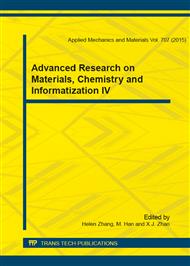[1]
P. L. Begler. Shaer-Dempster reasoning with Application to Multi-sensor Object Identification System. IEEE Trans on SMC, Vol. 17 (1997), pp.968-977.
Google Scholar
[2]
T. L. Chen and P. W. Que. Target recognition based on modified combination rule. Journal of Systems Engineering and Electronics, Vol. 17 (2006), pp.279-283.
Google Scholar
[3]
T. L. Chen and P. W. Que. Object recognition based on modified combination rule. Journal of Systems Engineering and Electronics, Vol. 17 (2006), pp.279-283.
Google Scholar
[4]
H. Odeberg. Fusion sensor information using fuzzy measures, Robotica, Vol. 31 (1989), pp.217-242.
Google Scholar
[5]
J. Chanussot, G. Mauris and P. Lambert. Fuzzy fusion techniques for linear features detection in multi-temporal SAR images. IEEE Trans. on Geosci. and Remote Sensing, Vol. 37 (1999), pp.1292-1305.
DOI: 10.1109/36.763290
Google Scholar
[6]
A. Cameron and H. Durrant-Whyte. A Bayesian approach to optimal sensor placement. Int. J. Robotics research, Vol. 12 (1992), pp.87-111.
Google Scholar
[7]
Chen S Y, Hu J M. Variable fuzzy method and its application in parts recognition, Systems Engineering and Electronics, 2006, 28(9): 1325-1328.
Google Scholar
[8]
L. C. Che, X. J. Zhou and Z. N. Xu. Application of extension method in multisensory data fusion for parts recognition, System Engineering Theory and Practics, Vol. 20 (2000), pp.91-94.
Google Scholar
[9]
H. P. Ren and L. W. Yang, Multi-sensor target recognition based on VIKOR, Sensors and Transducers, Vol. 156 (2014), pp.130-135.
Google Scholar
[10]
W. Chen and C. Zhou. Applied Research on the Evaluation of Water Resources Carrying Capacity in Wuhan City. China Rural Water and Hydropower, Vol. 6 (2014), pp.98-101.
Google Scholar
[11]
W. Zhou, W. K. Niu and Z. K. Yuan. Evaluation of the Service Capacity of Village Clinics Based on the Close-value Method. Chinese General Practice, Vol. 17 (2014), pp.389-390.
Google Scholar
[12]
J. C. Wang and W. Wang. Distribution network assessment model based on entropy weight osculating value method. East China Electric Power, Vol. 41 (2013), pp.1047-1050.
Google Scholar
[13]
S. P. Wan. Method of interval deviation degree for uncertain multi-sensor target recognition, Control and Decision, Vol. 24 (2009), pp.1306-1309.
Google Scholar
[14]
S. P. Wan, Method of inclination measurement for multi-sensor target recognition. Innovative Computing Information and Control-Express Letters, Vol. 3 (2009), pp.21-25.
Google Scholar
[15]
Y. Shao, F. C. Shi and J. Peng. An approach of robot non-vision multi-sensor fusion, Acta Electronica Sinica, Vol. 24 (1996). pp.94-97.
Google Scholar


